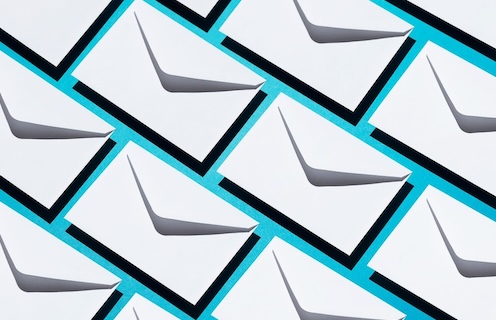
The feeling when you send out an event invitation email: anticipation, pride, stomach falling onto your feet when you realize you forgot to add the RSVP link.
We can probably all agree that sending invitations by email is one of the biggest rushes in event planning that happens in front of a laptop. Usually it's a great one, full of excitement, but sometimes it hits you that in the flurry of preparation you overlooked a key detail here or there that throws a wrench in the whole process.Although there will always be a rogue typo or awkward photo that slips throughnow and then, life will go on. But when you're gearing up to prepare a new online invitation campaign, there are a few bigger questions you can ask yourself that will help the success of your event much more in the long run.You have a lot of details to keep track of, so here are three straightforward questions that can have a major impact right from the first email:
What will make this event successful?
Don't leave this one hazy. You can use a trick we call the GEM Approach: Define a clear goal, the emails you'll need to get toward that goal, and a metric that counts it. Here are two examples using GEM:
Example 1 - The commercial event
Goal: Make a profit on attendance
Emails: A persuasive announcement, a follow-up about tickets going fast, and a 'last chance to buy' reminder
Metric: Ticket & on-site sales
Example 2 - The VIP event
Goal: Wow a select group of attendees with a special experience
Emails: An elegant RSVP, a series of exciting reveals of main event features, and a reminder before registration closes about the benefits of the experience
Metric: Positive testimonials from key stakeholdersAs you can see, this is a quick thought exercise that can force you to define what you need your event to do, and how to make it compelling from your vital very first communication with the people that make it happen.
Who can I invite that will help the event succeed?
You might be accustomed to thinking about the different groups of people you invite in terms of their needs: media will need special access here, VIP gets catering there, general admission waits on this line, and so forth.But for this exercise, think about each group in terms of how they help achieve the event goal you just defined.For example:If it’s a client event or sales roadshow, invite your best buyers, strongest prospects, and partners who need a relationship boost.If it's a social event or a product launch, secure eyeballs on the center stage by inviting influencers and media, and book talent that lines up with the brand and atmosphere you want to showcase.If it's a thought leadership event, invite industry peers, trade media, well-connected clients, and prospects.If it's a fundraiser or a political campaign, charge your donor base, make sure your sponsors have seamless guest list access, and top it off with influencers, talent and media (and definitely don’t charge them!).
Related: How invitations can increase RSVP response rates
How can technology make this a smarter process?
When you're in the thick of it, scrambling to keep guest info updated and managing dozens of email exchanges, it can be easy to let technology that's supposed to help you instead get the better of you.Maybe you needed to double-check how the guest list was formatted before you started working with it. Or maybe you want to sync your online RSVPs to your guest list dynamically, but forgot to check if your chosen event management software can do that.Whatever it is, now is the time to figure out how your tools are going to work for you, and not the other way around.Before you start, make sure your database is clean, updated with the latest information, and scrubbed of duplicates and bad data.Dirty databases lead to poor invitation campaign performance and a lot of extra work on your part - no one likes explaining that the reason they received four identical invitations was that you had them under four email addresses in your guest list, so do your due diligence early!Once you’re ready to start planning, map out the guest journey on a clean visual timeline.
To maximize deliverability, follow best practices to keep event emails out of spam.
Consult this guest journey and your defined event goals to help you decide the invitation tactics and event management software that's the best fit for the job. For example, you might find that software that focuses on ticketing falls short when you're running an event with a strong VIP component, and choose your tools accordingly.When creating invitations, start with a Save the Date to secure a spot in your guests’ agendas.Follow up with the actual invitation, and send reminders. For seated dinners, follow up with a phone call confirmation to avoid extra costs with the caterers (Pro tip: A successful email invitation campaign finds the perfect balance of persistence without getting people annoyed).
At the event, use a tech partner that can provide on-site communication. Text messaging for last minute changes, table allocation, or even a simple welcome note are small touches that add up and go a long way.Finally, schedule your thank-you campaign prior to the event and be timely with a follow up; your actions after the event are just as important as the ones leading up to it.Have an option to rate your events for future guest list segmentation - the more information you can collect now, the more successful your next event will be.


THE EVENT MANAGEMENT PLATFORM FOR THE WORLD'S BEST EVENTS
Connect with our team and discover why event professionals like you choose zkipster for their events.
GET IN TOUCH





















.png)